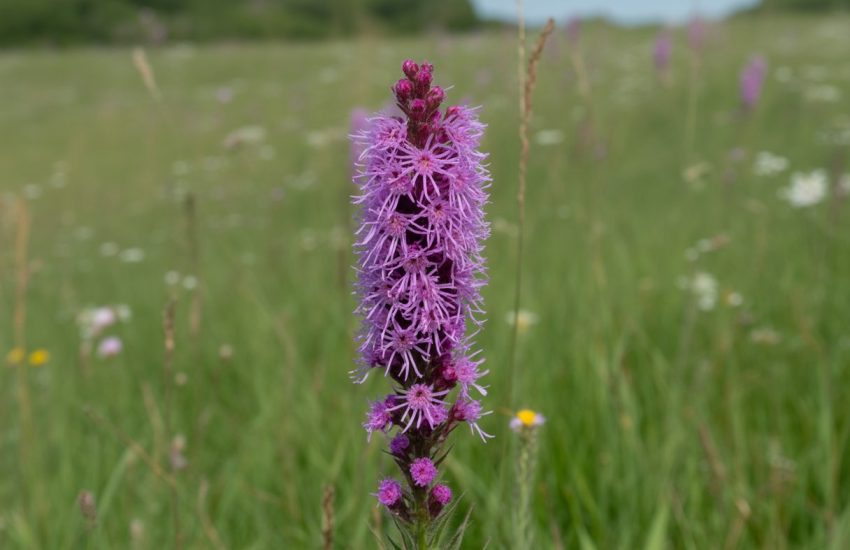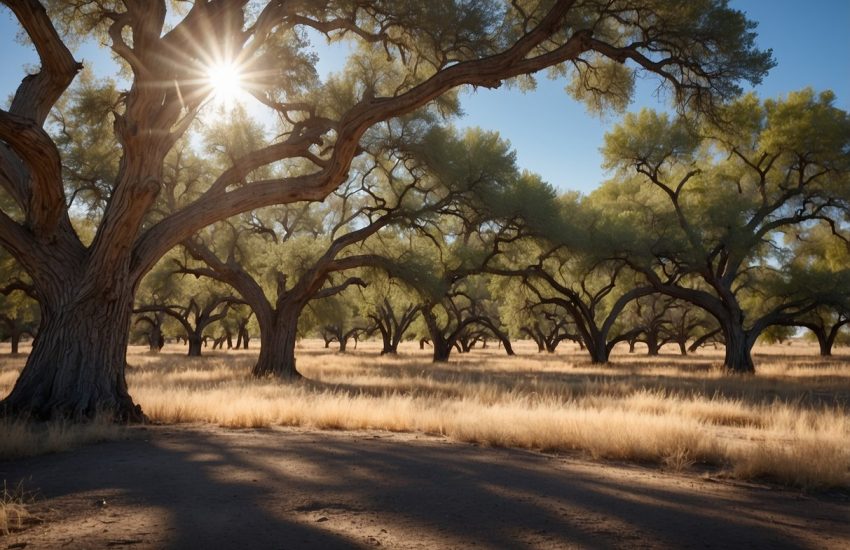Drought Tolerant Native Plants New Hampshire for Sustainable Landscaping and Water Conservation
New Hampshire’s climate throws plenty of curveballs, including dry spells that leave traditional garden plants struggling. Picking drought-tolerant native plants keeps your landscape healthy and cuts down on water use.
These plants have adapted to New Hampshire’s natural conditions, making them reliable choices during periods of low rainfall.
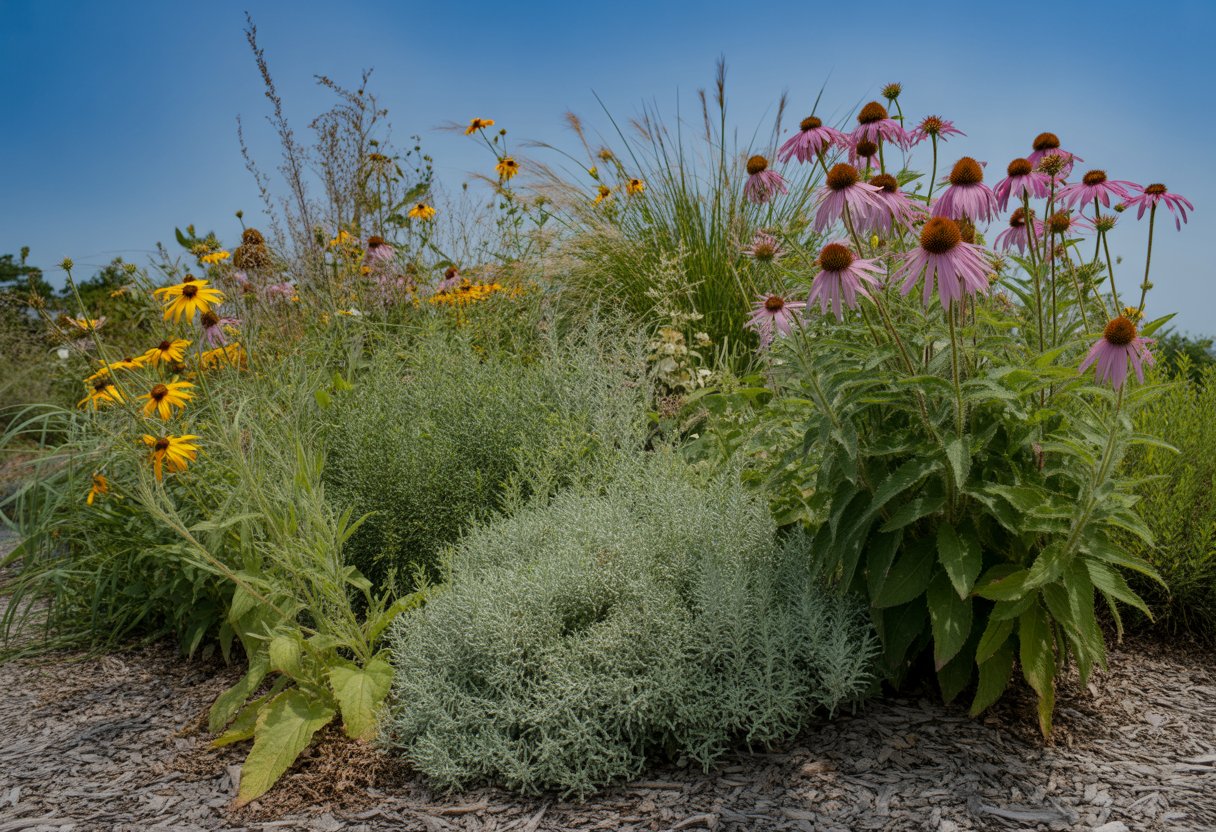
Native species like New England aster, purple coneflower, and little bluestem grass thrive with barely any extra watering. They support local ecosystems and help reduce irrigation needs.
This combo of drought tolerance and native roots makes them a practical pick for sustainable gardening in the area.
Using drought-tolerant native plants also means less maintenance and more protection for local wildlife. Gardeners get tough, beautiful plants that don’t need coddling during dry summers.
Overview of Drought Tolerant Native Plants in New Hampshire
Drought-tolerant native plants in New Hampshire handle limited water, making them ideal for sustainable landscaping. They boost regional biodiversity and give wildlife a reliable habitat, all while saving water.
Distribution and Occurrence
You’ll find drought-tolerant native plants all over southern New Hampshire, stretching into Maine, Vermont, Massachusetts, and New York. They tend to pop up in dry, well-drained soils—think open woods, rocky hills, and upland meadows.
Many thrive in plant communities with sandy or rocky ground. For instance, eastern red cedar (Juniperus virginiana) and little bluestem (Schizachyrium scoparium) show up a lot in those spots.
You’ll spot these species in other northeastern states like Pennsylvania, Connecticut, and New Jersey, so their range for xeriscaping is pretty broad.
Ecological and Botanical Characteristics
These plants usually have deep roots, waxy or hairy leaves, and small leaf surfaces to hold onto water. They grow slowly, but they tough it out through dry seasons.
Species like butterfly weed (Asclepias tuberosa) and New England aster (Symphyotrichum novae-angliae) feed pollinators with nectar and offer food for birds and insects.
They help biodiversity by giving wildlife places to nest and hide. Their drought adaptations also mean they help prevent soil erosion when things get dry.
Management and Water Conservation Benefits
Once established, drought-tolerant native plants barely need any watering or fuss. They fit right into xeriscaping strategies that seriously cut water use.
Their deep roots pull water down into the soil and cut down on runoff, which helps control erosion and saves water for everyone. Plus, these plants can lower your irrigation bill and make urban green spaces more sustainable.
Recommended Drought Tolerant Native Plant Species
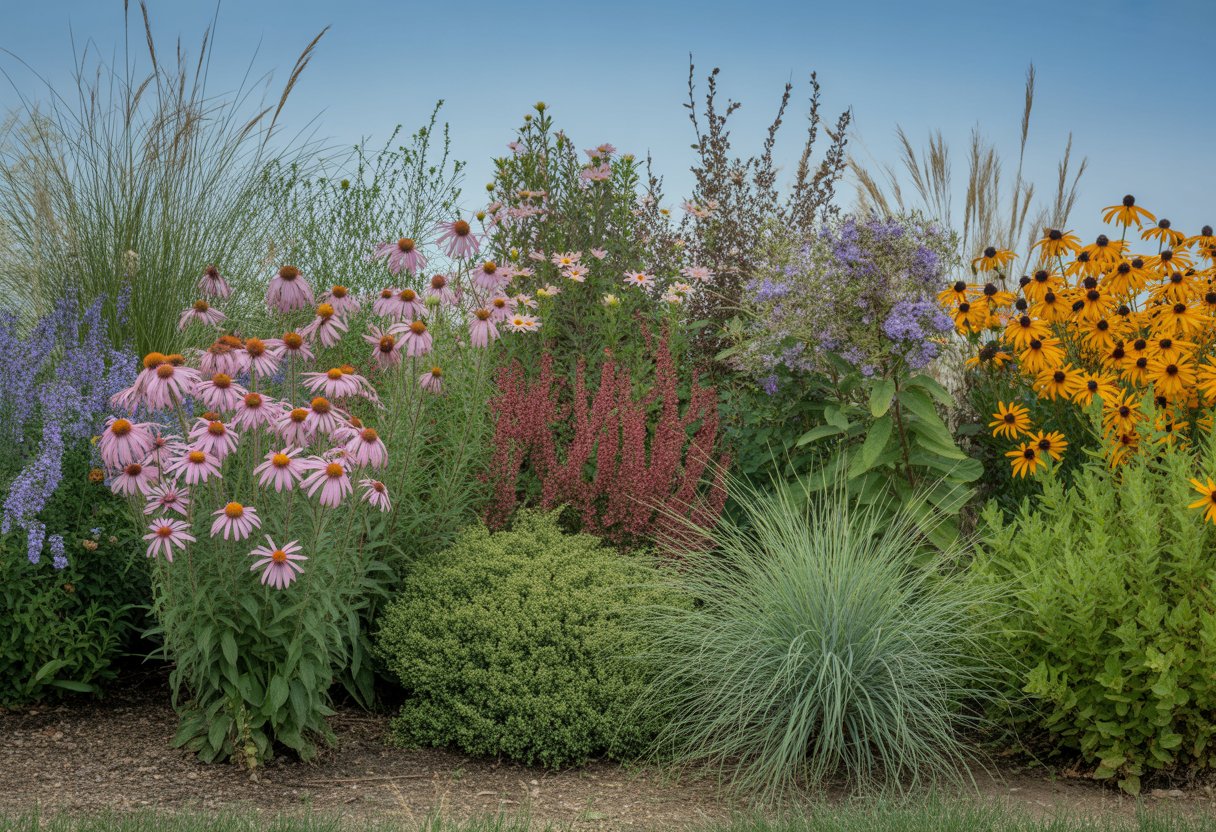
Drought-tolerant native plants for New Hampshire range from trees and shrubs to grasses and wildflowers. Each group brings something different—resilience, color, or support for local wildlife.
Native Trees and Shrubs
Trees like white pine and red maple handle dry spells once they’ve settled in, though they still appreciate a drink now and then. Sassafras stands out for its drought resistance and its spicy fragrance.
Among shrubs, native blueberries do double duty: they survive drought and feed wildlife. Sassafras shrubs also manage dry soils and offer shelter through the seasons.
These species help keep soil in place and create habitat in tough, dry spots.
Yellow birch doesn’t love drought, but it can hang in there if you mix it with tougher species. Mixing hardwoods and native shrubs keeps your landscape diverse and flexible.
Drought Tolerant Grasses and Sedges
Grasses like little bluestem, big bluestem, and indiangrass are native prairie types that thrive in New Hampshire’s drier areas. Deep roots help them save water and cut down on evaporation.
Switchgrass and cool-season options like Virginia wildrye and Canada wildrye work well for low-water lawns or prairie gardens. People often mix these in grass seed blends for sustainable yards.
Sedges make a solid choice for shady or in-between spots; some types handle drought and help control erosion while supporting wildlife.
Wildflowers and Ferns
Wildflowers such as purple coneflower, black-eyed Susan, and wild bergamot do great in dry soils and bring bursts of color. They attract pollinators and boost garden diversity.
Some ferns, like Christmas fern, stand up to drought better than others and work in shaded gardens that dry out now and then. Picking ferns suited to local conditions makes a big difference in how well they last.
A mix of wildflowers and ferns builds healthier soil and keeps things interesting, while giving native wildlife a helping hand.
Planting and Maintenance Guidelines
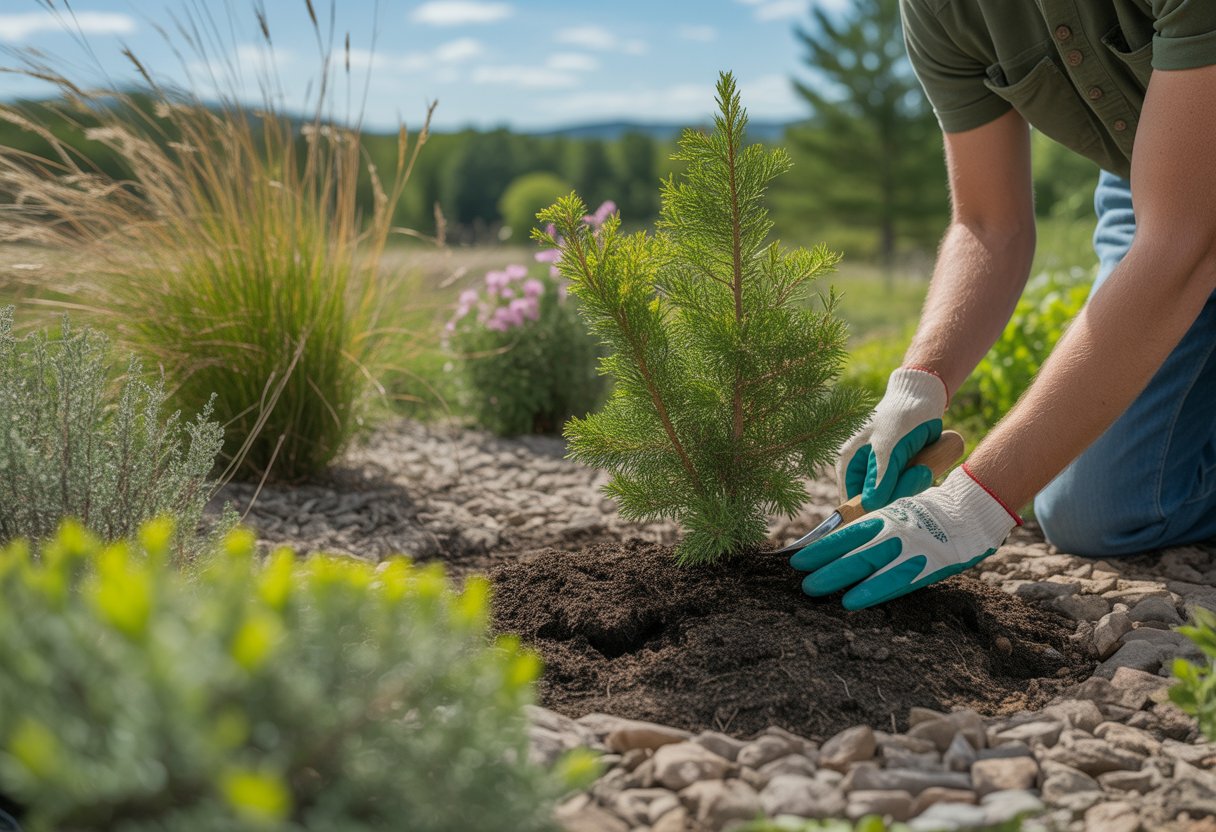
Getting the site, planting method, and care right matters a lot for drought tolerant native plants in New Hampshire. Paying attention to sunlight, soil, and timing sets these plants up to thrive in tough spots.
Site Selection and Preparation
Choose a spot with full sun for at least six hours a day—these plants need it for maximum drought resistance. Soil should drain well, ideally sandy or loamy, so water doesn’t hang around and cause trouble.
Stick to areas that don’t get disturbed much and stay away from low spots that get soggy. Clear out invasive weeds and debris to give your new plants a fighting chance.
Lightly till or rake the soil to help seeds settle in. Skip the compost—too much organic matter can hold moisture and work against drought tolerance.
Seeding and Germination
The best time to plant is early spring or late fall, when the soil’s just right for germination and there’s a bit of natural rain. Seeding rates depend on the species but usually fall between 10 and 20 pounds per acre.
Scatter seeds evenly over the prepared soil with a spreader or by hand. Press them in gently, but don’t bury them more than a quarter inch—most native seeds need light to sprout.
Germination can take anywhere from 10 days to six weeks, depending on the plant and the weather. Keep an eye out, but let rainfall do the work; it’s better for building drought resilience than extra watering.
Long-Term Care and Sustainability
Once you get these plants established, you really don’t need to fuss over them much. Skip the frequent watering—let those roots dig deep and toughen up for dry spells.
Plan on mowing every so often, especially after the seeds drop. That sort of mimics what fire would do in nature and helps keep woody plants from taking over.
Keep an eye out for invasive species. They can muscle out the natives, which isn’t great for fire ecology or for the wildlife that depends on them.
You’ll usually see the most seed production about two to three years after planting. That helps the plants reseed themselves naturally.
If you want these plants to thrive long-term, focus on keeping the soil structure and sunlight just right. That way, they’ll stay healthy and handle droughts better down the road.

